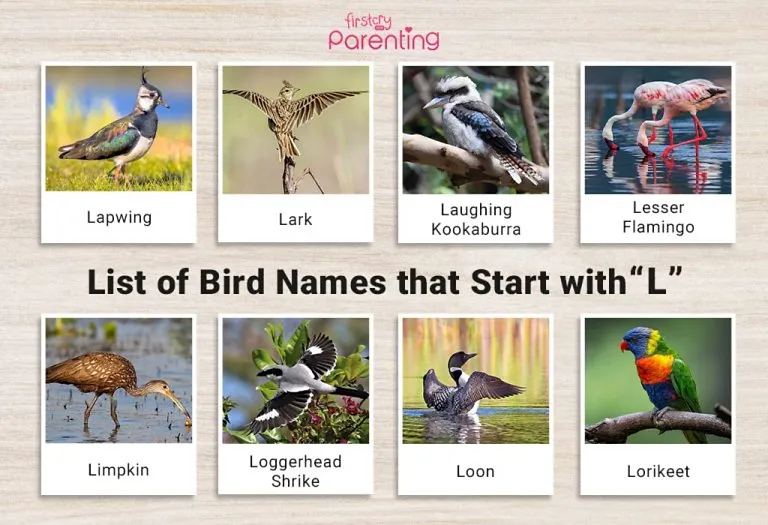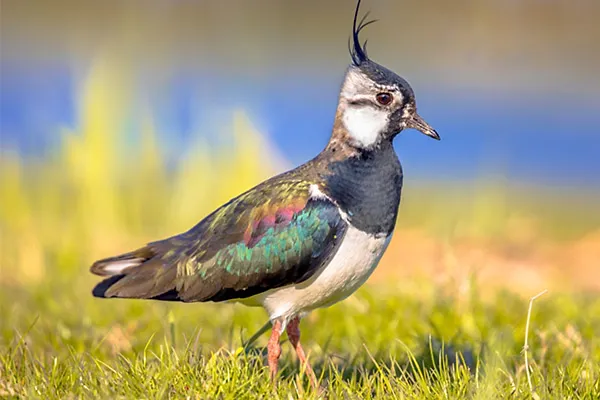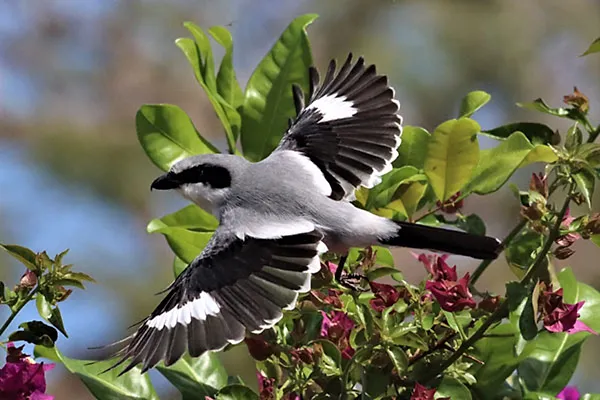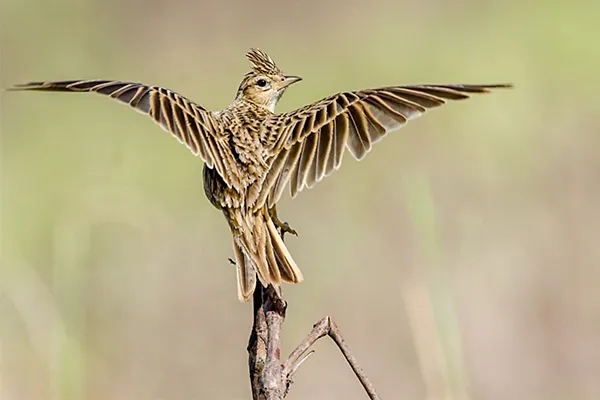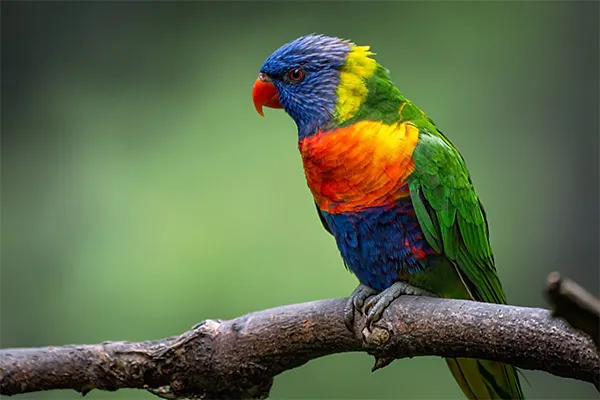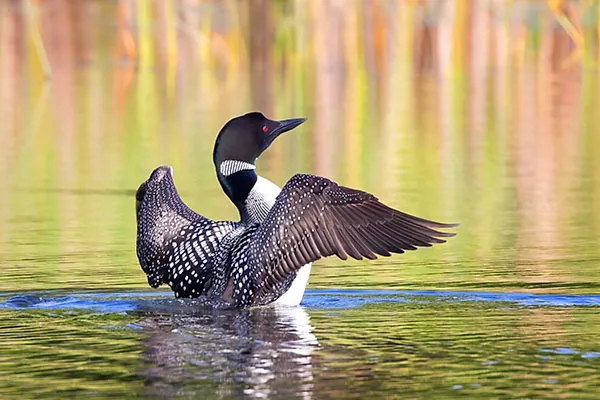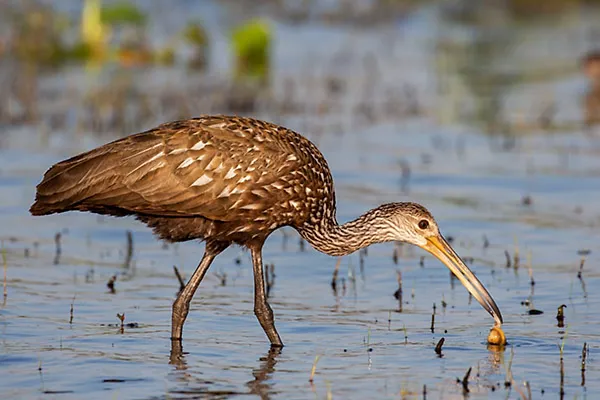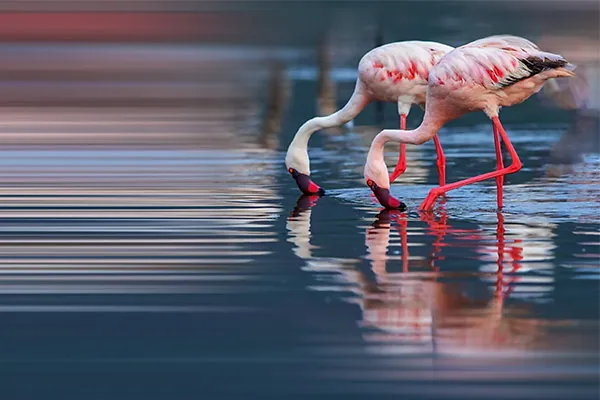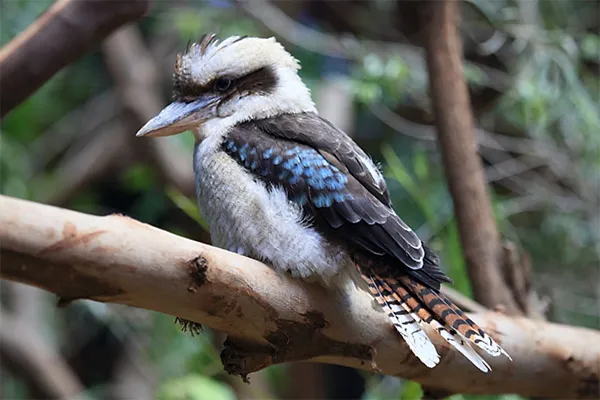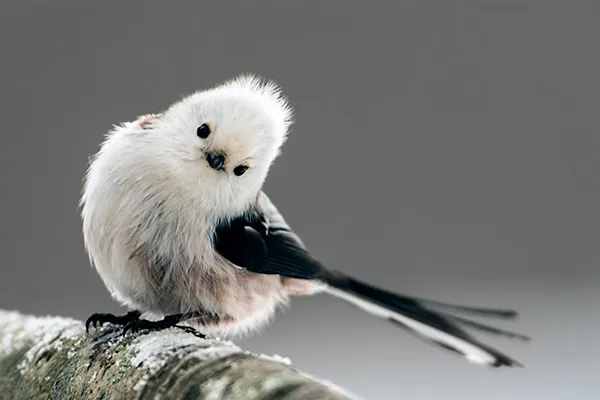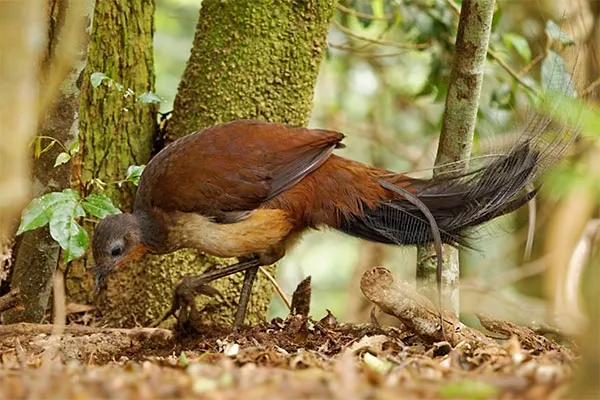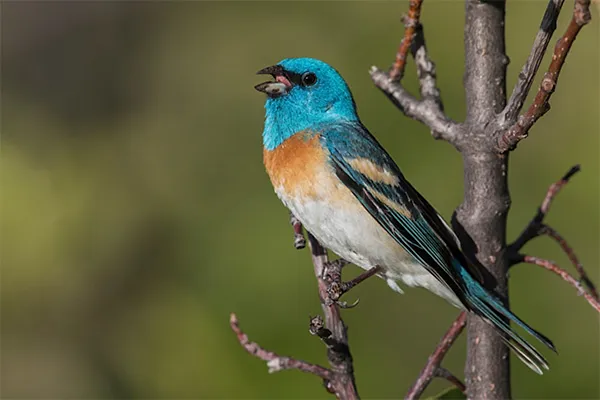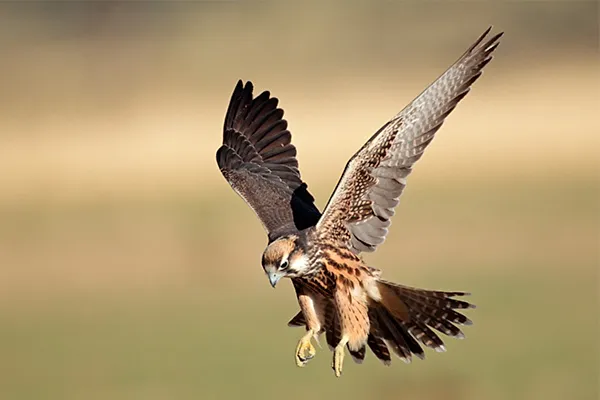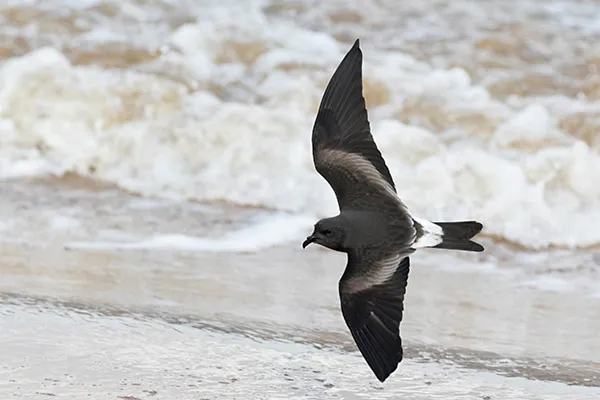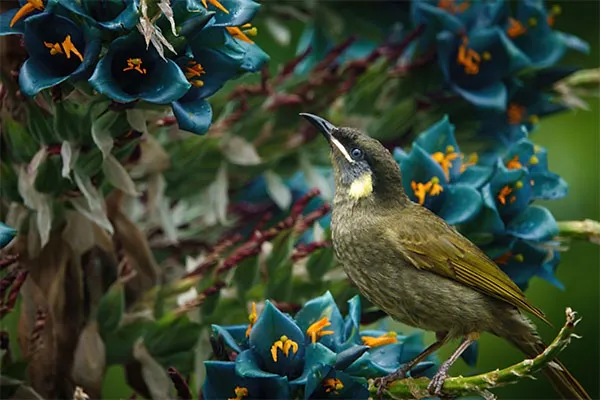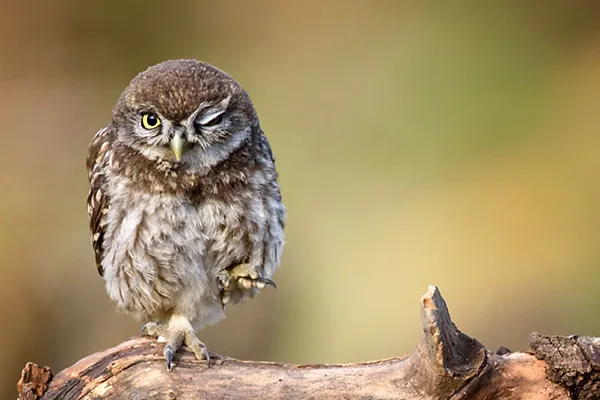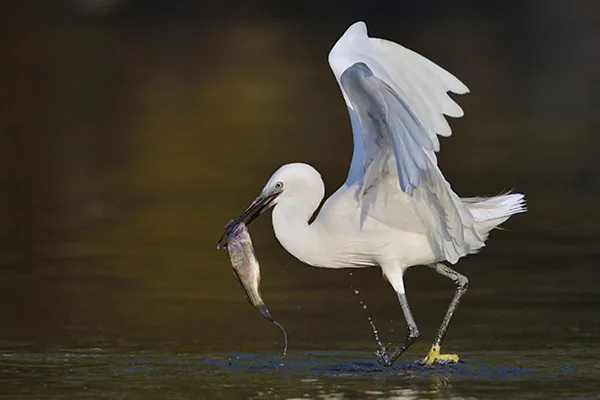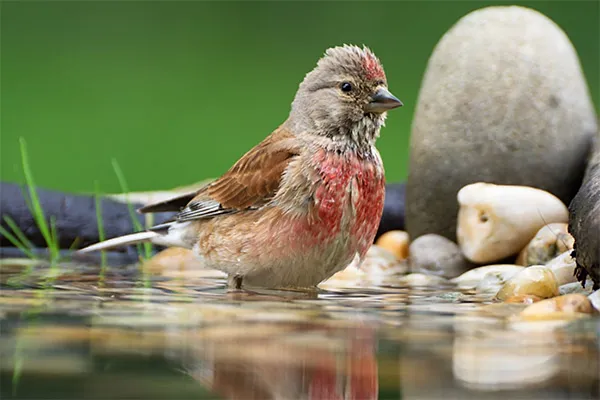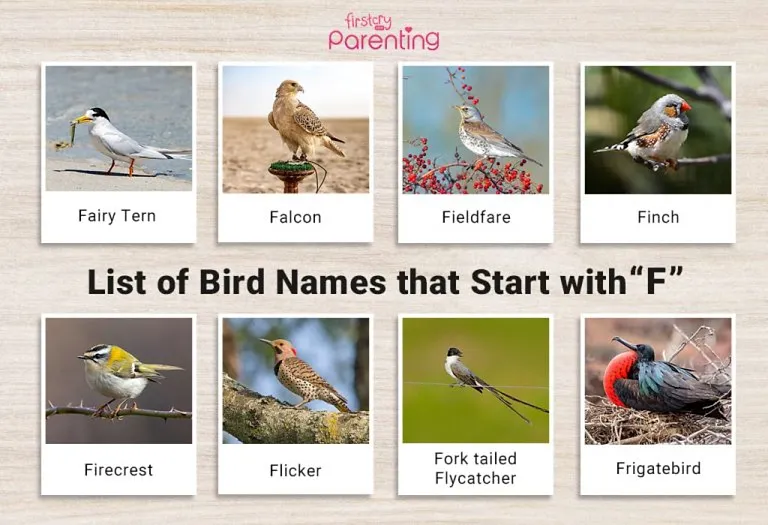List of Birds That Start With L
Bird watching has become one of the most delightful pastimes for adults and children alike. A wide range of colourful and exotic birds await to be discovered, some of which may surprise even the most experienced birdwatchers. Expanding your vocabulary and that of the young ones has never been more fun, especially when delving into bird names that start with the letter L. For parents and educators, introducing L-letter bird names for preschoolers and kids can be an exciting way to enhance kids’ vocabulary and foster a love for nature. In this guide, we will unveil the fascinating world of birds, starting with our feathery friends whose names begin with the letter ‘L’.
List of Common Birds That Start With L
Birds are beautiful creatures, each with its unique beauty and charm. Among the vast species, birds beginning with the letter L hold a special allure for birdwatchers and nature enthusiasts alike. Here’s a curated list to help you delve into the world of bird names with ‘L’.
1. Lapwing
Scientific Name: Vanellus vanellus
Where is it Found: Grasslands, wetlands, and coastal areas across Europe and Asia
Lapwings are striking birds known for their iridescent green or purple back feathers and distinctive crests on their heads. Their underparts are mainly white, and they have long legs suited for wading. Lapwings are medium-sized birds known for their peewit call, which gives them another common name—the Peewit.
Interesting Facts:
- Lapwings are ground-nesting birds.
- They perform elaborate aerial displays during the breeding season.
- Their eggs have a unique pear shape that prevents them from rolling away.
2. Loggerhead Shrike
Scientific Name: Lanius ludovicianus
Where is it Found: North America, especially in open areas with short vegetation
The Loggerhead Shrike is a songbird with a unique hunting style. It has a grey head, white underparts, and black wings. Its distinctive feature is the black “mask” across its eyes. Despite its small size, it’s known as a fierce predator, feeding on insects, small mammals, and birds.
Interesting Facts :
- This bird has a curious behaviour called “lardering,” where it pins its prey on sharp objects like thorns or barbed wire for later consumption.
3. Lark
Scientific Name: Alaudidae (family name)
Where is it Found: Larks inhabit various regions worldwide, with many species spread across Europe, Asia, and Africa.
Larks are small to medium-sized birds with a stout build. Their brownish plumage provides camouflage against predators. Larks are well-known for their melodic songs, which they often sing while in flight.
Interesting Facts:
- Larks have been immortalized in poetry and songs for centuries, celebrating their uplifting and melodic songs.
- Some species, like the Skylark, can sing non-stop for hours!
4. Lorikeet
Scientific Name: Trichoglossus (genus name)
Where is it Found: Native to the eastern coast of Australia, Papua New Guinea, Indonesia, and surrounding islands.
Lorikeets are small, brightly coloured parrots. Their brush-tipped tongues help them feed on nectar from flowers. Their vibrant plumage includes shades of green, blue, red, and yellow.
Interesting Facts:
- Lorikeets have a special bond with certain trees.
- The birds help pollinate the trees by transferring pollen while feeding on nectar, showcasing a beautiful relationship between nature.
5. Loon
Scientific Name: Gavia (genus name)
Where is it Found: Lakes and wooded lakeshores in Northern North America and Northern Eurasia
Loons are large, aquatic birds known for their eerie, haunting calls that resonate across northern lakes. They have sharp beaks, red eyes, and a black-and-white checkered pattern on their backs. They are excellent divers and can remain submerged for several minutes.
Interesting Facts:
- Loons are powerful swimmers, but on land, they’re pretty awkward due to the placement of their legs towards the back of their body.
- Their bones are denser than other birds, which assists in diving.
6. Limpkin
Scientific Name: Aramus guarauna
Where is it Found: Freshwater marshes and swamps of Florida, the Caribbean, and Central and South America.
Limpkins are wading birds with long legs and a slightly curved bill. Their plumage is a rich brown with white streaks and spots, giving them a somewhat streaky appearance. They primarily feed on apple snails, using their specialized bill to extract the snail from its shell.
Interesting Facts:
- Their name, “Limpkin”, is derived from their peculiar limping-like flight.
- The Limpkin’s cry is often used in movies to depict tropical or jungle settings, even in places where Limpkins don’t reside!
7. Lesser Flamingo
Scientific Name: Phoeniconaias minor
Where is it Found: Lakes and alkaline lagoons in parts of Africa and India.
Lesser Flamingos are the smallest of the flamingo species. They possess a beautiful pinkish-white plumage with black-tipped wings. Their long, lean neck, legs, and curved beaks give them a distinctive silhouette.
Interesting Facts:
- Flamingos get pink colouration from the beta-carotene in the algae and crustaceans they eat.
- Lesser Flamingos are known to form large colonies, sometimes numbering in the millions!
Also Read: Fun Facts About Flamingos for Children
8. Laughing Kookaburra
Scientific Name: Dacelo novaeguineae
Where is it Found: Forests and woodlands of Eastern Australia.
The Laughing Kookaburra is the largest member of the kingfisher family. It has a chunky appearance with a brownish back, white underparts, and a distinctive ‘laughing’ call, which sounds like echoing human laughter.
Interesting Facts:
- Their laughing call is often used to establish territory.
- Contrary to popular belief, they don’t eat fish as much as other kingfishers. Instead, they prey on insects, small reptiles, and even rodents.
9. Long-Tailed Tit
Scientific Name: Aegithalos caudatus
Where is it Found: Forests, woodlands, and gardens across Europe and Asia.
As the name suggests, Long-tailed Tits have exceptionally long tails in comparison to their small bodies. Their plumage is black, white, and pink, making them look delicate and attractive.
Interesting Facts:
- These birds are known to form close-knit groups during winter.
- They huddle together, forming a row, to conserve heat during cold nights.
10. Lyrebird
Scientific Name: Menura (genus name)
Where is it Found: Rainforests of Southeastern Australia.
Lyrebirds are ground-dwelling birds known for their impressive tail feathers, which resemble a lyre (a musical instrument). They also have strong legs and claws for digging.
Interesting Facts:
- They are among the world’s best mimics.
- Lyrebirds can imitate chainsaws, camera shutters, car alarms, and other birds’ calls.
- During the mating season, the male uses this talent and displays its tail feathers to attract females.
11. Lazuli Bunting
Scientific Name: Passerina amoena
Where is it Found: Western North America, especially in brushy areas and along woodland edges.
This small, vibrant songbird is truly a sight to behold. Males are adorned with a brilliant blue head and back, offset by a white belly and chestnut-coloured wings. Females sport a more muted brownish-green hue but are still elegant.
Interesting Facts:
- The Lazuli Bunting’s bright colours make it a favourite among birdwatchers.
- During courtship, the male often flies up into the air while singing, then parachutes back down with wings spread and tail splayed.
12. Lanner Falcon
Scientific Name: Falco biarmicus
Where is it Found: Across Africa, Southeast Europe, and into Asia. Prefers open habitats, from desert to light woodland.
The Lanner Falcon possesses a sleek grey-blue back and a rufous crown, with a notable creamy underbelly streaked with darker shades. Renowned for its speed and agility, this falcon is adept at catching prey mid-flight.
Interesting Facts:
- Historically, Lanner Falcons were used in falconry due to their outstanding hunting skills.
- They have a distinctive courtship display involving fast and agile flying manoeuvres.
13. Leach’s Storm-Petrel
Scientific Name: Oceanodroma leucorhoa
Where is it Found: Open ocean across the Northern Hemisphere, often far from the coast.
A small seabird, Leach’s Storm-Petrel has dark plumage, long wings, and a slightly forked tail. It flits gracefully over the water’s surface, often without flapping its wings, picking small food items from the ocean’s surface.
Interesting Facts:
- Unlike many seabirds, storm petrels are nocturnal in their breeding colonies to avoid predators.
- Their name, “Petrel,” is derived from “Peter” due to their ability to seemingly walk on water, similar to the biblical story of Saint Peter.
14. Lewin’s Honeyeater
Scientific Name: Meliphaga lewinii
Where is it Found: Coastal Eastern and Southeastern Australia.
Lewin’s Honeyeater is distinguished by the distinctive yellow patch around its ear. Its plumage is primarily dark green, and it feeds primarily on fruits and nectar but will also eat insects.
Interesting Facts:
- They have a unique and loud “machine-gun” like call, which they use to establish territories.
- These birds play a crucial role in pollinating flowers, especially those of the native Australian trees.
15. Little Owl
Scientific Name: Athene noctua
Where is it Found: Across Europe and parts of Asia and North Africa. They prefer open countryside with patches of woodland.
As the name suggests, Little Owls are relatively small. They have stout bodies with mottled brown and white plumage, and their fierce yellow eyes and flat-faced appearance make them unmistakable.
Interesting Facts:
- These owls are diurnal, meaning they’re often active during the day, especially in the early morning and late afternoon.
- Despite their small size, they have a loud call and can be pretty territorial.
16. Little Egret
Scientific Name: Egretta garzetta
Where is it Found: Wetlands, lakes, rivers, and coastal areas across Europe, Asia, and parts of Africa.
A striking, medium-sized bird with pure white plumage, the Little Egret is most identifiable by its black legs and contrasting bright yellow feet. This wader gracefully strides through shallow waters, searching for fish and invertebrates.
Interesting Facts:
- Once hunted extensively for their delicate plumes, Little Egrets faced drastic reductions in numbers.
- Protective measures and changed fashion trends have since allowed their populations to rebound.
- Their feathers, once a luxury item in women’s hats, played a role in the early conservation movement.
17. Linnet
Scientific Name: Carduelis cannabina
Where is it Found: Open landscapes, farmlands, and heathlands across Europe and parts of Asia.
Linnets are small finches, with the males showcasing a lovely crimson forehead and breast, contrasting their brown upperparts. Females are more muted in colour, primarily brown with streaks. Both sexes have a delightful, melodious song.
Interesting Facts:
- Linnets derive their name from their preference for flax seeds used to produce linen.
- They often form large flocks outside the breeding season, providing a beautiful spectacle.
Other Birds Beginning With L
Apart from the detailed birds we’ve previously discussed, there’s a plethora of avian species whose name starts with the letter L. Each bird, whether big or small, colourful or muted, plays a vital role in the ecosystem and adds to the mesmerising beauty of the avian world. Here’s a quick list to quench your curiosity:
- Lanceolated Warbler
- Lapland Longspur
- Large-billed Tern
- Large-tailed Nightjar
- Laughing Dove
- Leadbeater’s Cockatoo
- Least Bittern
- Least Flycatcher
- Least Grebe
- Least Sandpiper
- Least Tern
- LeConte’s Sparrow
- Lesser Black-backed Gull
- Lesser Cuckoo
- Lesser Frigatebird
- Lesser Goldfinch
- Lesser Nighthawk
- Lesser Scaup
- Lesser Spotted Woodpecker
- Lesser Whistling Duck
- Lewis’s Woodpecker
- Light-mantled Albatross
- Lilac Kingfisher
- Lined Seedeater
- Little Auk
- Little Bee-eater
- Little Blue Heron
- Little Bronze Cuckoo
- Little Brown Bat (Not a bird but often included due to its name)
- Little Corella
- Little Crake
- Little Crow
- Little Cuckoo-Dove
- Little Curlew
- Little Forktail
- Little Friarbird
- Little Grebe
- Little Gull
- Little Penguin
- Little Pied Cormorant
- Little Ringed Plover
- Little Shearwater
- Little Stint
- Little Tern
- Little Wattlebird
- Long-billed Corella
- Long-billed Curlew
- Long-billed Dowitcher
- Long-billed Thrasher
- Long-crested Eagle
- Long-eared Owl
- Long-legged Buzzard
- Long-tailed Broadbill
- Long-tailed Duck
- Long-tailed Hermit
- Long-tailed Jaeger
Whether you’re a budding birdwatcher or a seasoned ornithologist, there’s always something new to discover. With every bird that starts with the letter L, you’re one step closer to appreciating the vast diversity and beauty of the avian world.
FAQs
1. How can I attract birds beginning with the letter L to my garden?
Planting native trees and shrubs, providing fresh water sources, and offering bird-friendly foods in feeders can attract various birds, including those that start with the letter L, to your garden.
2. Are any of the birds that start with the letter L endangered?
Several birds that begin with the letter L are listed as endangered or vulnerable, such as the Long-billed Curlew and the Lesser Flamingo. Awareness and support of conservation efforts to protect these species is essential.
The fascinating world of birds starts with the letter L and offers a diverse array of species, each with unique charm and significance. Exploring and learning about these avian wonders enriches our knowledge and underscores the importance of conserving their habitats for future generations.
Birds Names That Begin With (A to Z)
| A | B | C | D | E | F | G | H | I |
| J | K | L | M | N | O | P | Q | R |
| S | T | U | V | W | X | Y | Z |
Was This Article Helpful?
Parenting is a huge responsibility, for you as a caregiver, but also for us as a parenting content platform. We understand that and take our responsibility of creating credible content seriously. FirstCry Parenting articles are written and published only after extensive research using factually sound references to deliver quality content that is accurate, validated by experts, and completely reliable. To understand how we go about creating content that is credible, read our editorial policy here.





